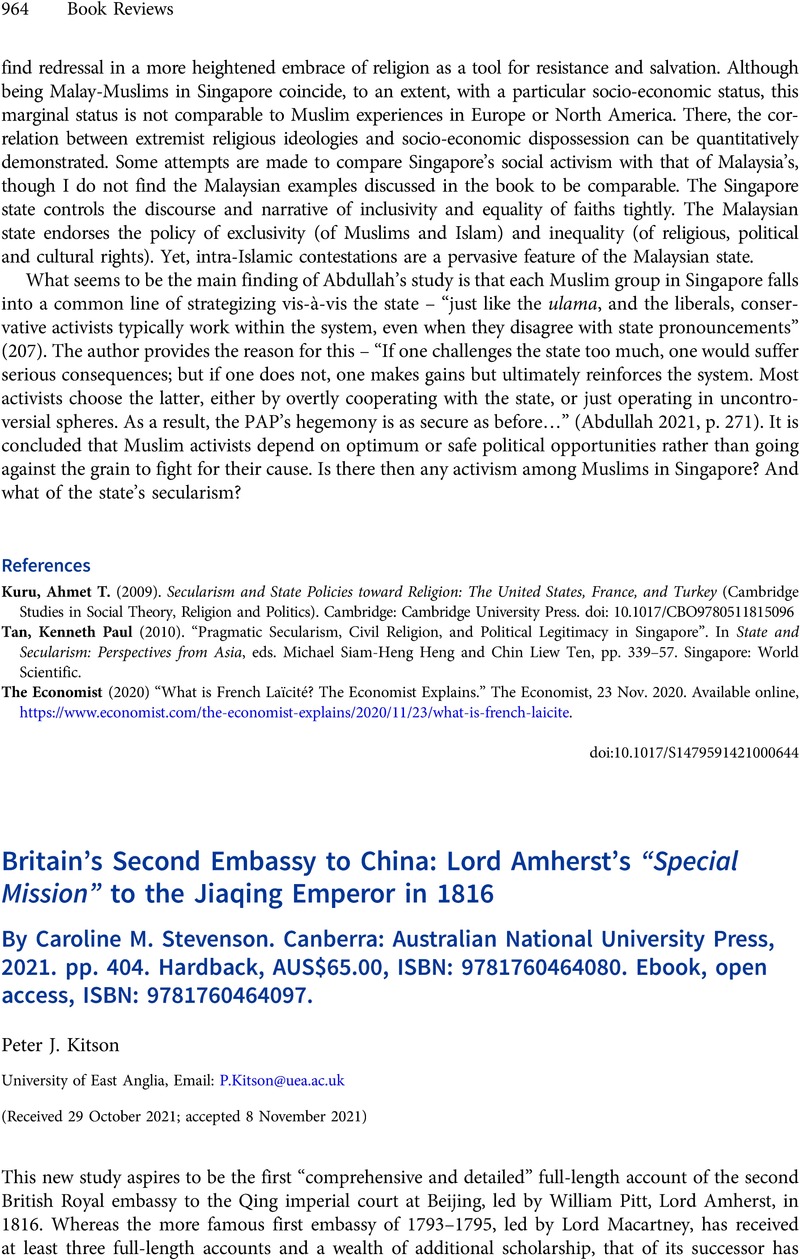No CrossRef data available.
Article contents
Britain’s Second Embassy to China: Lord Amherst’s “Special Mission” to the Jiaqing Emperor in 1816 By Caroline M. Stevenson. Canberra: Australian National University Press, 2021. pp. 404. Hardback, AUS$65.00, ISBN: 9781760464080. Ebook, open access, ISBN: 9781760464097.
Review products
Britain’s Second Embassy to China: Lord Amherst’s “Special Mission” to the Jiaqing Emperor in 1816 By Caroline M. Stevenson. Canberra: Australian National University Press, 2021. pp. 404. Hardback, AUS$65.00, ISBN: 9781760464080. Ebook, open access, ISBN: 9781760464097.
Published online by Cambridge University Press: 25 January 2022
Abstract
An abstract is not available for this content so a preview has been provided. Please use the Get access link above for information on how to access this content.

- Type
- Book Review
- Information
- Copyright
- Copyright © The Author(s), 2022. Published by Cambridge University Press
References
Chen, Li (2016). Chinese Law in Imperial Eyes. New York, NY: Columbia University Press.Google Scholar
Hampton, Timothy (2009). Fictions of Embassy. Ithaca, NY: Cornell University Press.CrossRefGoogle Scholar
Sennett, Richard (1994). Flesh and Stone: The Body and the City in Western Civilization. New York, NY: W.W. Norton & Company.Google Scholar



